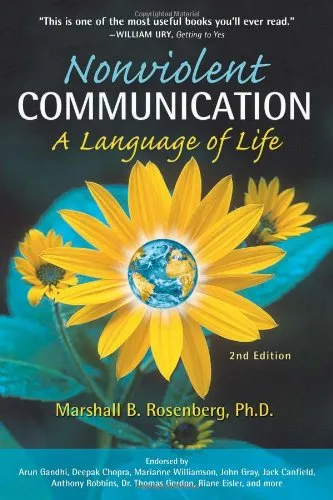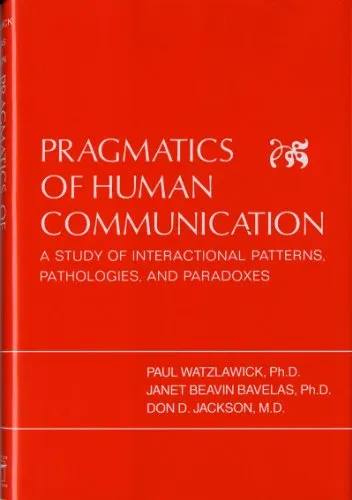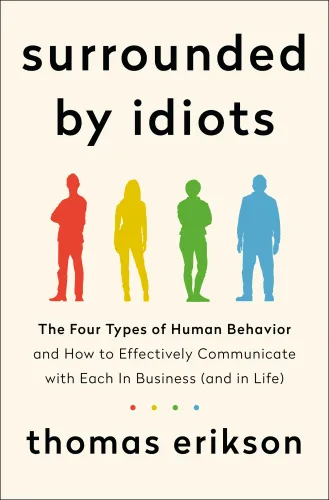Nonviolent Communication: A Language of Life: Create Your Life, Your Relationships, and Your World in Harmony with Your Values
4.8
Reviews from our users

You Can Ask your questions from this book's AI after Login
Each download or ask from book AI costs 2 points. To earn more free points, please visit the Points Guide Page and complete some valuable actions.Related Refrences:
Introduction to Nonviolent Communication
Marshall B. Rosenberg's "Nonviolent Communication: A Language of Life" is an invitation to discover how compassionate communication can transform relationships, fuel personal growth, and cultivate a societal dialogue grounded in mutual respect and understanding. This foundational book introduces readers to a simple, yet profoundly impactful, approach to engaging with others.
Detailed Summary of the Book
At the heart of Nonviolent Communication (NVC) is the belief that everyone possesses the capacity for compassion and that when this capacity is nurtured, positive change occurs at a personal, relational, and societal scale. Rosenberg outlines a four-step process that helps individuals express themselves clearly and empathize more effectively: observation, feelings, needs, and requests. These steps aim to help individuals identify their own needs and the corresponding feelings that arise from these needs, while fostering an understanding of others’ needs and feelings.
The book emphasizes the critical role of presence and active listening in building connections. By focusing on the present moment without judgment, individuals can create a space of empathetic engagement. Rosenberg provides a wealth of practical exercises and illustrative examples to demonstrate how this approach can be applied in everyday interactions ranging from domestic conversations to resolving conflicts in professional and global contexts.
Key Takeaways
Nonviolent Communication is more than just a technique; it is a philosophy of living with authenticity and empathy.
- Observations vs. Evaluations: Clearly distinguish between what you see and your interpretations or judgments. This clarity prevents misunderstandings and paves the way for mutual understanding.
- Feelings vs. Thoughts: Learn to identify and articulate your feelings rather than disguising them with thoughts or interpretations about others.
- Needs vs. Strategies: Understand and communicate the underlying needs behind emotions. Differentiating needs from strategies fosters an openness to collaborative problem-solving.
- Requests vs. Demands: Frame your needs as requests instead of demands to encourage dialogue and freedom from obligation.
Famous Quotes from the Book
"Every criticism, judgment, diagnosis, and expression of anger is the tragic expression of an unmet need."
"Empathy allows us to re-perceive our world in a new way and move forward."
"When we hear the other person’s feelings and needs, we recognize our common humanity."
Why This Book Matters
The significance of "Nonviolent Communication: A Language of Life" lies in its transformative potential. In a world rife with conflict and division, this book offers a pathway to understanding, resolving differences, and cultivating cultures of peace and cooperation. Its practical applications are boundless — impacting personal relationships, educational systems, business environments, and international relations.
Rosenberg's approach empowers individuals to express and meet their own needs while also considering the needs of others, crafting solutions that serve the collective well-being. His emphasis on empathic engagement fosters deeper human connections and satisfies the universal craving for empathetic interaction. As readers incorporate these practices into their lives, they find themselves contributing meaningfully to the creation of a more compassionate world.
Free Direct Download
You Can Download this book after Login
Accessing books through legal platforms and public libraries not only supports the rights of authors and publishers but also contributes to the sustainability of reading culture. Before downloading, please take a moment to consider these options.
Find this book on other platforms:
WorldCat helps you find books in libraries worldwide.
See ratings, reviews, and discussions on Goodreads.
Find and buy rare or used books on AbeBooks.
1465
بازدید4.8
امتیاز0
نظر98%
رضایتReviews:
4.8
Based on 0 users review
Questions & Answers
Ask questions about this book or help others by answering
No questions yet. Be the first to ask!






